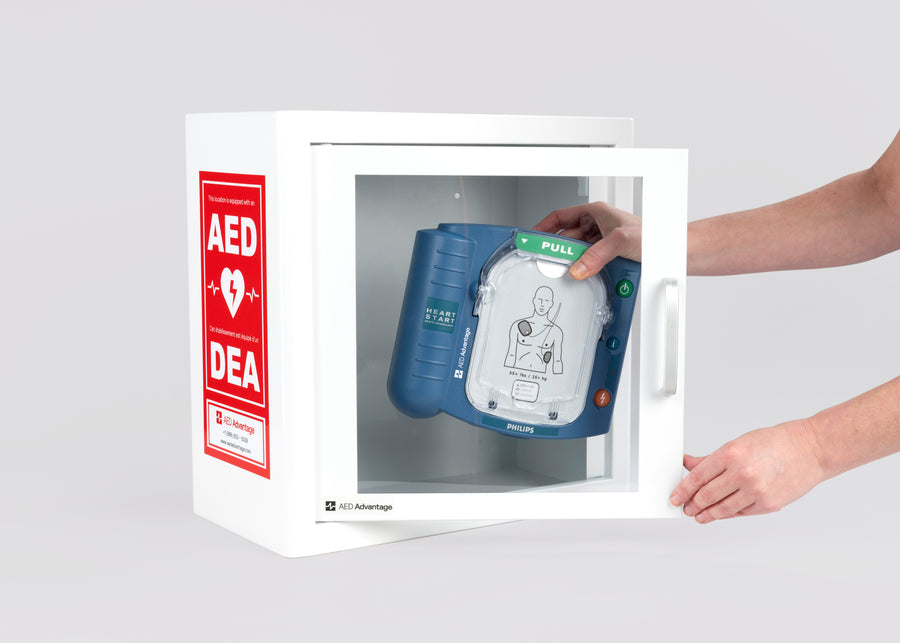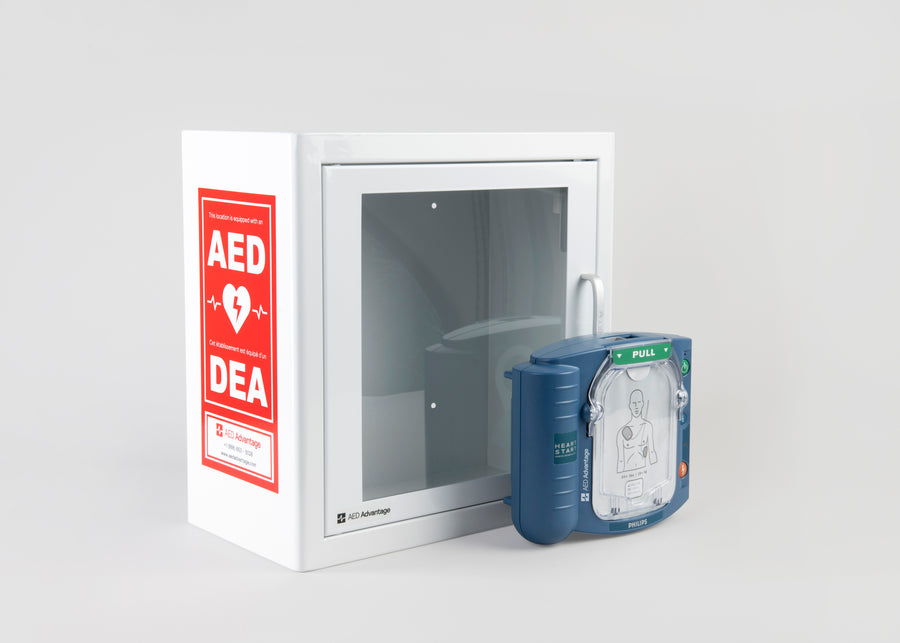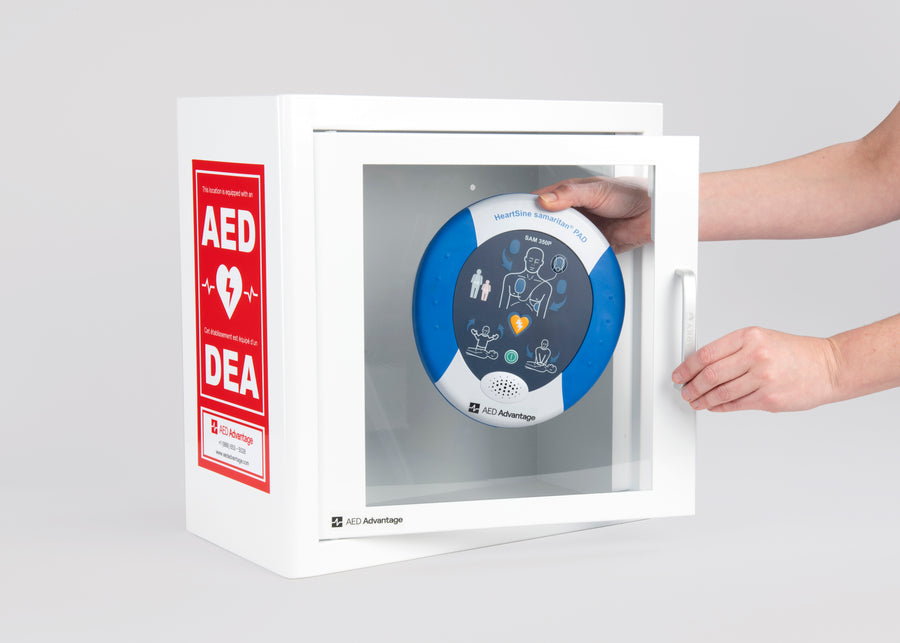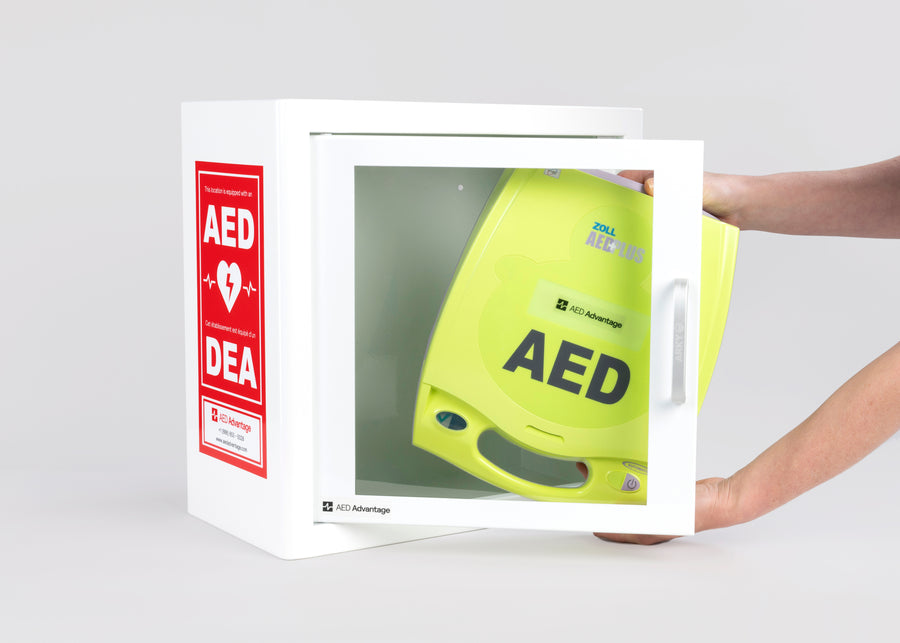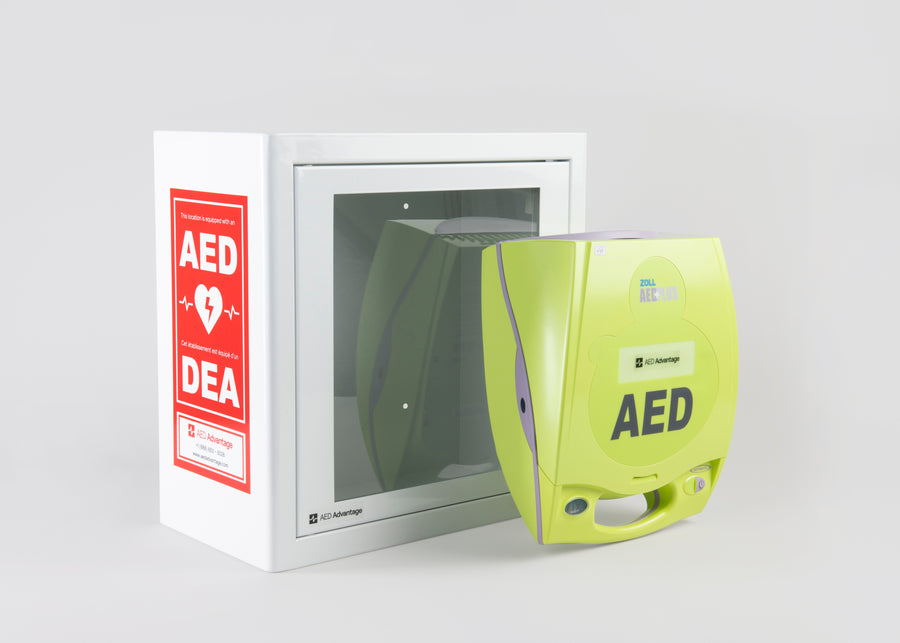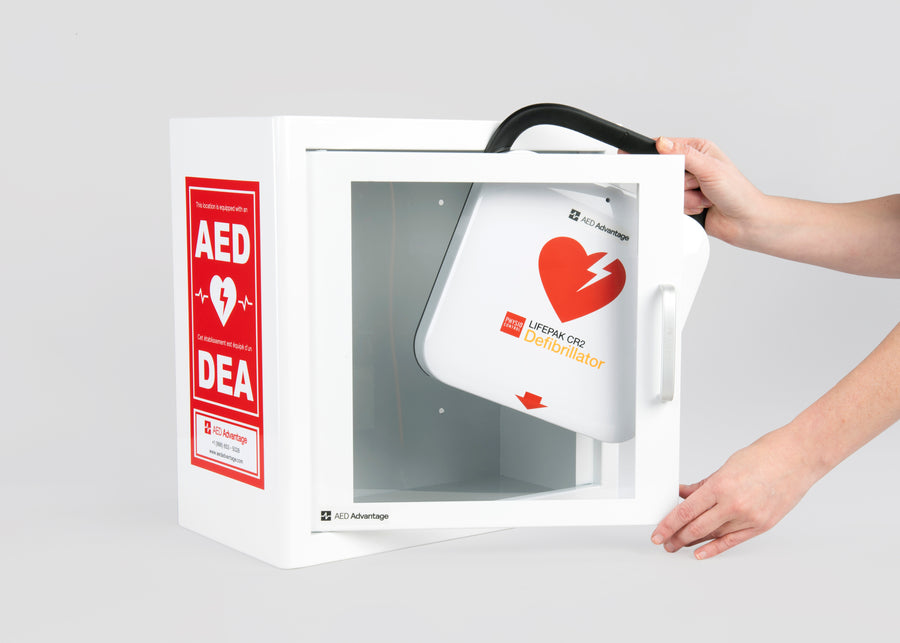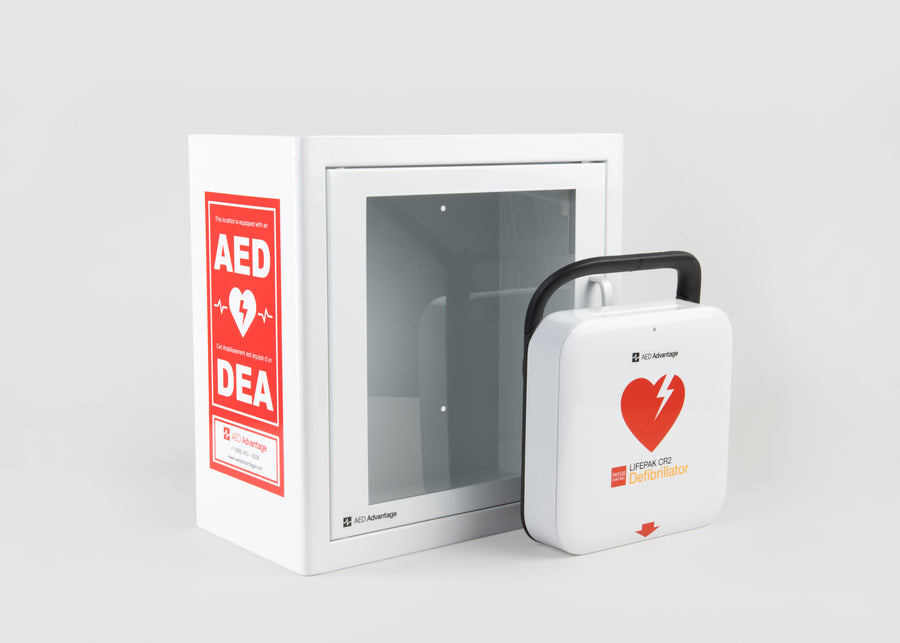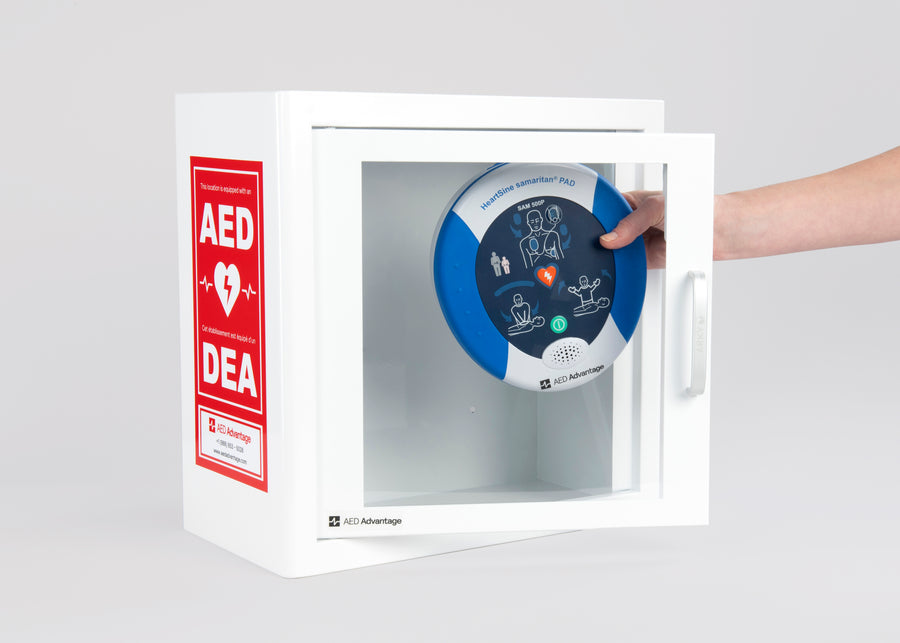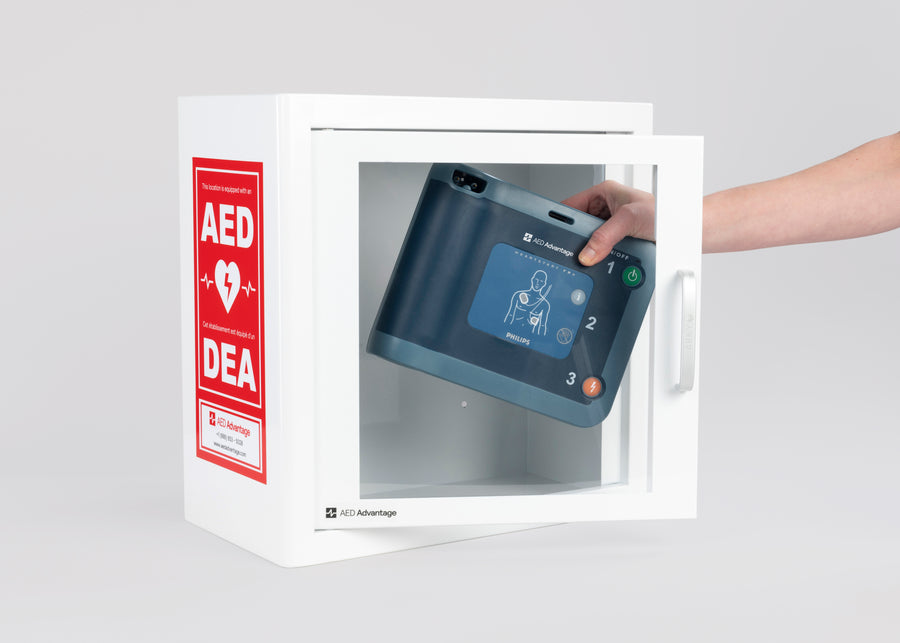AEDs for Community Centres & Public Buildings
Having an AED in public places like community centers is an easy way to help keep everyone safe. While it’s something we don’t always think about, sudden cardiac arrest (SCA) can happen anywhere, and being prepared with an AED gives you the confidence to act fast.
These devices are simple to use, with clear instructions that guide you step-by-step, so anyone, regardless of training level, can help in an emergency. Installing an AED in public places provides peace of mind and shows a commitment to health and safety, making it a smart choice for any public building.


At AED Advantage, we offer a range of easy-to-use AEDs and provide full support to help you choose the best one for your community center or public building. From installation to training and ongoing maintenance, we make sure that both you and your AED are always ready for action.
Best AEDs for Public Buildings
When choosing an AED for public places, the key is to look for a device that’s durable, easy to use, and accessible for anyone—even without training.
Public areas need AEDs with straightforward features like clear voice prompts and visual instructions to guide users through emergencies step by step. Durability and portability are also crucial since these devices may face frequent use and diverse conditions.
Options like the LIFEPAK CR2 and HeartSine 350P stand out for public buildings for a few reasons:
LIFEPAK CR2
- ClearVoice™ Guidance: Provides step-by-step voice instructions that adjust to background noise, ensuring clarity during high-pressure situations.
- Seamless CPR Support: With cprINSIGHT™ technology, the CR2 analyzes heart rhythms without interrupting chest compressions, making CPR more effective.
- Child Mode: Automatically adjusts shock levels for children without needing additional pads, making it versatile for any scenario.
HeartSine 350P
- Compact and Portable: Lightweight design makes it easy to store and transport when needed.
- Simple to Use: Clear voice prompts and visual cues guide users through every step of the rescue process.
Both AEDs combine advanced features like real-time CPR feedback, automatic shock delivery, and long-lasting batteries, ensuring they’re always ready to save lives. They’re built to be reliable, intuitive, and effective, making them an excellent choice for high-traffic areas.
Ce que nous recommandons :
Ensemble Sain et sauf
Automatic External Defibrillators In Public Places
AEDs should be placed where they’re easy to access and most likely to be needed, especially in areas where paramedics might take longer to arrive. Proper placement, clear signage, and easily understood usage instructions are key to managing these devices effectively.
AEDs in public places should typically be:
- Easily accessible to the public: Make sure anyone can reach the AED quickly in an emergency.
- Clearly signed: Use universal symbols to make it visible at a glance.
- In an alarmed, unlocked cabinet: Ensures the AED is secure but immediately available.
- In high-traffic areas: Hallways or common spaces where people naturally gather.
Quick access to an AED can make all the difference, and there are countless success stories of lives saved thanks to their availability.
Are AEDs Mandatory In Canada?
Even though AEDs aren’t mandatory across Canada, some provinces, like Ontario with Bill 141, have already implemented AED legislation, and many hope others will follow.
They’re a vital addition to any public space for several reasons:
- Essential for treating sudden cardiac arrest: AEDs deliver life-saving shocks to restore normal heart rhythms.
- Boost survival rates: Their use increases survival chances dramatically when deployed quickly.
- Accessible for everyone: AEDs are designed to be used by everyday heroes, with voice prompts and visual instructions to guide users step-by-step.
While regulations differ by region, all AEDs must meet rigorous safety and reliability standards.
With AED Advantage, you can count on expert support to keep your device maintained and ready to perform.
Get in touch with us to see how we can help you find the right AED for your community or public building.
